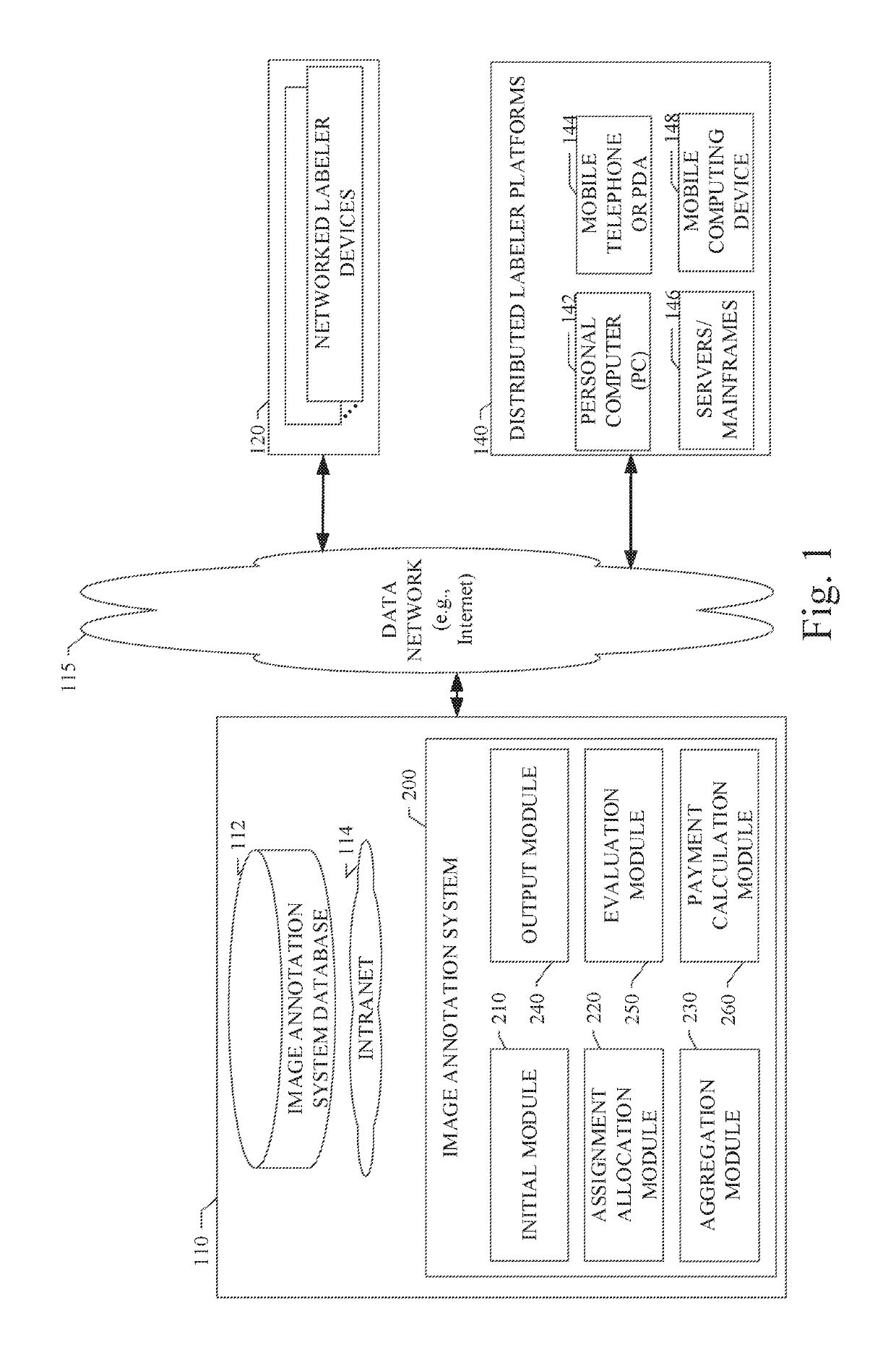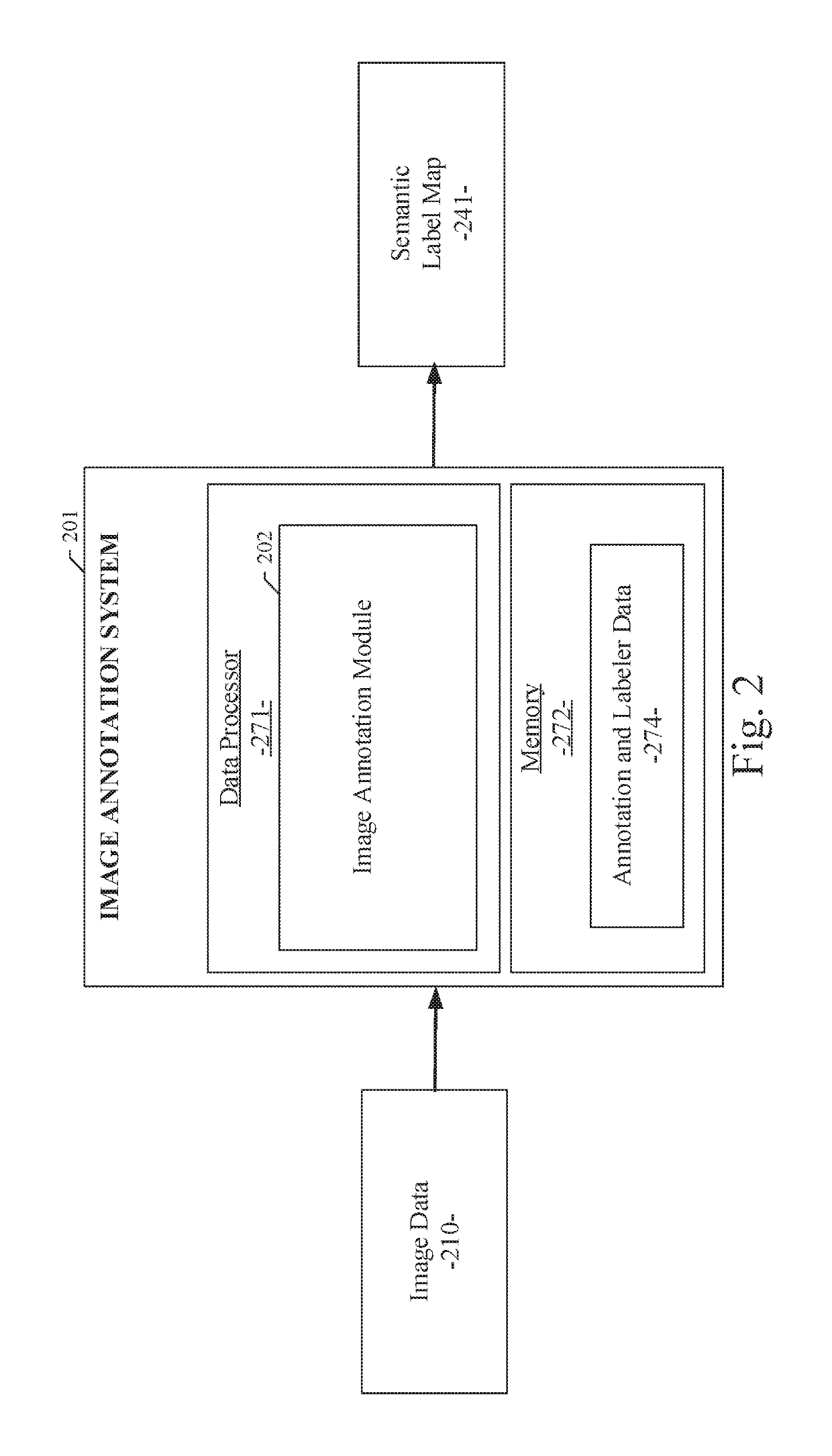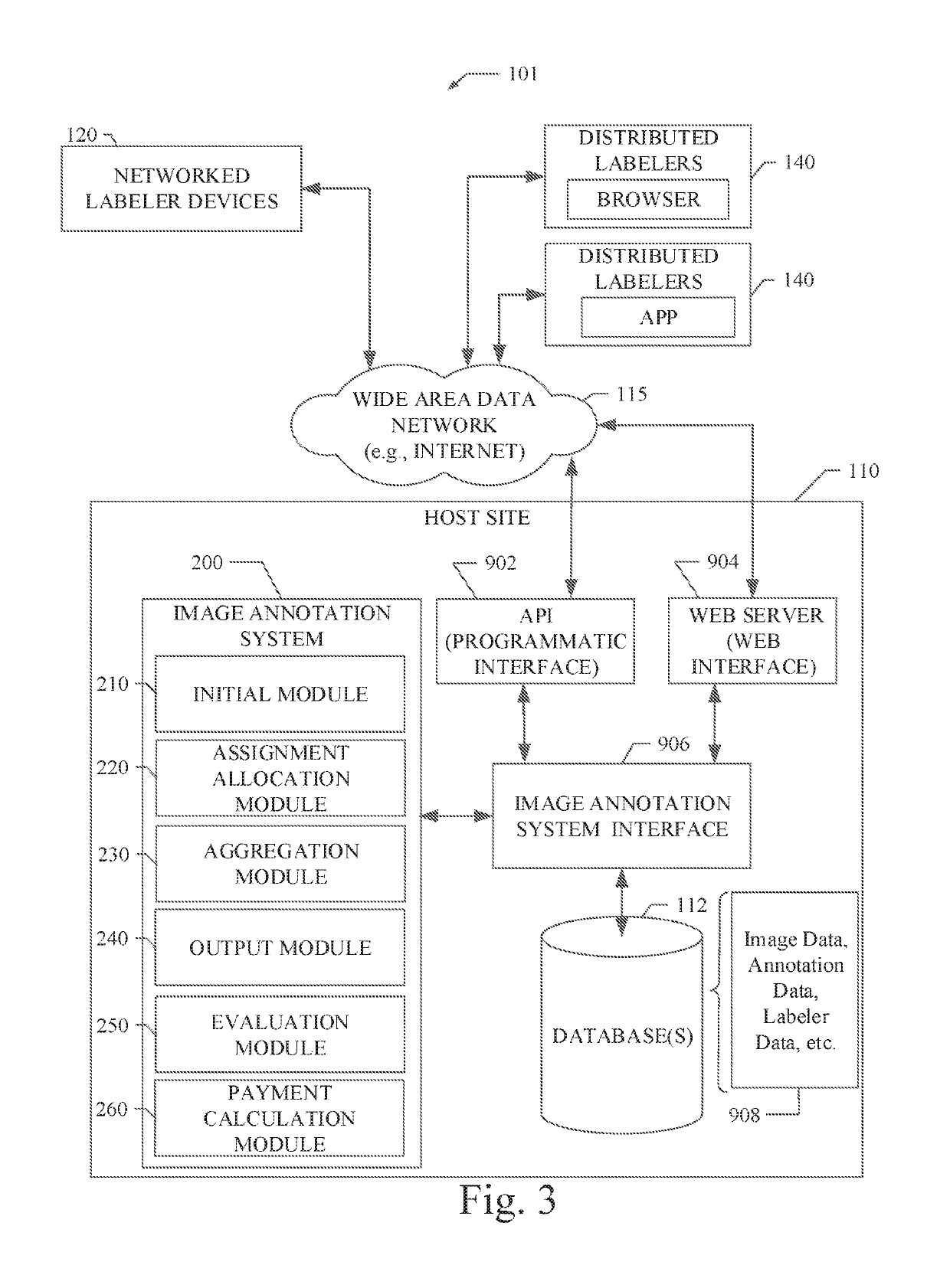System and method for image annotation
a technology of image annotation and system, applied in the field of system and method for image annotation, can solve the problems of affecting the effective performance of autonomous vehicle control and simulation systems, affecting the quality and affecting the automatic process of image analysis and object labeling. , to achieve the effect of reducing the significance of annotations, facilitating image analysis and object labeling, and evaluating quality
- Summary
- Abstract
- Description
- Claims
- Application Information
AI Technical Summary
Benefits of technology
Problems solved by technology
Method used
Image
Examples
Embodiment Construction
[0012]In the following description, for purposes of explanation, numerous specific details are set forth in order to provide a thorough understanding of the various embodiments. It will be evident, however, to one of ordinary skill in the art that the various embodiments may be practiced without these specific details.
[0013]A system and method for implementing an image annotation platform are disclosed herein. The image annotation system described herein can facilitate image analysis and object labeling to annotate objects in images with one or more labels. The labeled objects can then be classified and further processed for vehicle control systems, vehicle simulation systems, or other uses. The image annotation system of an example embodiment can assign image annotation tasks to labelers, aggregate the image annotations provided by the assigned labelers, automatically evaluate the performance of each of the labelers, determine performance-based payments for each of the labelers, an...
PUM
 Login to View More
Login to View More Abstract
Description
Claims
Application Information
 Login to View More
Login to View More - R&D
- Intellectual Property
- Life Sciences
- Materials
- Tech Scout
- Unparalleled Data Quality
- Higher Quality Content
- 60% Fewer Hallucinations
Browse by: Latest US Patents, China's latest patents, Technical Efficacy Thesaurus, Application Domain, Technology Topic, Popular Technical Reports.
© 2025 PatSnap. All rights reserved.Legal|Privacy policy|Modern Slavery Act Transparency Statement|Sitemap|About US| Contact US: help@patsnap.com



